
FORTEACHERS ONLY
The University of the State of New York
REGENTS HIGH SCHOOL EXAMINATION
PS–ES PHYSICAL SETTING/EARTH SCIENCE
Thursday, August 16, 2007 — 12:30 to 3:30 p.m., only
SCORING KEY AND RATING GUIDE
Directions to the Teacher:
Refer to the directions on page 3 before rating student papers.
Updated information regarding the rating of this examination may be posted on the New York
State Education Department’s web site during the rating period. Check this web site
http://www.emsc.nysed.gov/osa/ and select the link “Examination Scoring Information” for any
recently posted information regarding this examination. This site should be checked before the
rating process for this examination begins and several times throughout the Regents examination
period.
I I
I I
Part A and Part B–1
Allow 1 credit for each correct response.
Part A
Part P B–1
1 . . . . . 1. . . . . . .
13 . . . . . 1. . . . . . .
25 . . . . 2. . . . . . .
36 . . . . . 2. . . . . . .
44 . . . . . 4. . . . . . .
2 . . . . . 1. . . . . . .
14 . . . . . 2. . . . . . .
26 . . . . 2. . . . . . .
37 . . . . . 1. . . . . . .
45 . . . . . 3. . . . . . .
3 . . . . . 2. . . . . . .
15 . . . . . 1. . . . . . .
27 . . . . 3. . . . . . .
38 . . . . . 1. . . . . . .
46 . . . . . 1. . . . . . .
4 . . . . . 1. . . . . . .
16 . . . . . 1. . . . . . .
28 . . . . 4. . . . . . .
39 . . . . . 2. . . . . . .
47 . . . . . 4. . . . . . .
5 . . . . . 4. . . . . . .
17 . . . . . 4. . . . . . .
29 . . . . 4. . . . . . .
40 . . . . . 4. . . . . . .
48 . . . . . 3. . . . . . .
6 . . . . . 4. . . . . . .
18 . . . . . 3. . . . . . .
30 . . . . 2. . . . . . .
41 . . . . . 4. . . . . . .
49 . . . . . 1. . . . . . .
7 . . . . . 3. . . . . . .
19 . . . . . 4. . . . . . .
31 . . . . 3. . . . . . .
42 . . . . . 1. . . . . . .
50 . . . . . 3. . . . . . .
Part PB –1 Score
8 . . . . . 4. . . . . . .
20 . . . . . 2. . . . . . .
32 . . . . 4. . . . . . .
43 . . . . . 4. . . . . . .
9 . . . . . 1. . . . . . .
21 . . . . . 3. . . . . . .
33 . . . . 4. . . . . . .
10 . . . . . 3. . . . . . .
22 . . . . . 2. . . . . . .
34 . . . . 3. . . . . . .
11 . . . . . 2. . . . . . .
23 . . . . . 1. . . . . . .
35 . . . . 1. . . . . . .
Part A Score
12 . . . . . 2. . . . . . .
24 . . . . . 1. . . . . . .


P HYSICAL S ETTING/ E ARTH S CIENCE – continued
Directions to the Teacher
Follow the procedures below for scoring student answer papers for the Physical Setting/Earth
Science examination. Additional information about scoring is provided in the publication
Information Booklet for Scoring Regents Examinations in the Sciences .
Use only red ink or red pencil in rating Regents papers. Do not correct the student’s work by
making insertions or changes of any kind.
On the detachable answer sheet for Part A and Part B–1, indicate by means of a check mark
each incorrect or omitted answer. In the box provided at the end of each part, record the number
of questions the student answered correctly for that part.
At least two science teachers must participate in the scoring of each student’s responses to the
Part B–2 and Part C open-ended questions. Each of these teachers should be responsible for
scoring a selected number of the open-ended questions on each answer paper. No one teacher is to
score all the open-ended questions on a student’s answer paper.
Students’ responses must be scored strictly according to the Scoring Key and Rating Guide. For
open-ended questions, credit may be allowed for responses other than those given in the rating
guide if the response is a scientifically accurate answer to the question and demonstrates adequate
knowledge as indicated by the examples in the rating guide. In the student’s answer booklet, record
the number of credits earned for each answer in the box printed to the right of the answer lines or
spaces for that question.
Fractional credit is not allowed. Only whole-number credit may be given to a response. Units
need not be given when the wording of the questions allows such omissions.
Raters should enter the scores earned for Part A, Part B–1, Part B–2, and Part C on the
appropriate lines in the box printed on the answer booklet and then should add these four scores
and enter the total in the box labeled “Total Written Test Score.” The student’s score for the
Earth Science Performance Test should be entered in the space provided. Then, the student’s
raw scores on the performance test and written test should be converted to a scaled score by
using the conversion chart that will be posted on the Department’s web site
http://www.emsc.nysed.gov/osa/ on Thursday, August 16, 2007. The student’s scaled score should be
entered in the labeled box on the student’s answer booklet. The scaled score is the student’s final
examination score.
All student answer papers that receive a scaled score of 60 through 64 must be scored a second
time. For the second scoring, a different committee of teachers may score the student’s paper or
the original committee may score the paper, except that no teacher may score the same open-ended
questions that he/she scored in the first rating of the paper. The school principal is responsible for
assuring that the student’s final examination score is based on a fair, accurate, and reliable scoring
of the student’s answer paper.
Because scaled scores corresponding to raw scores in the conversion chart may change from one
examination to another, it is crucial that for each administration, the conversion chart provided for
that administration be used to determine the student’s final score.
[3]
[OVER]

P HYSICAL S ETTING/ E ARTH S CIENCE – continued
Part B–2
Allow a total of 15 credits for this part. The student must answer all questions in this part.
51 [1] Allow 1 credit. Acceptable responses include, but are not limited to:
— The crusts have a silicate composition.
— The crusts contain the elements oxygen and silicon.
52 [1] Allow 1 credit for both Mercury and Mars.
53 [1] Allow 1 credit. Acceptable responses include, but are not limited to:
— The terrestrial planets are rocky and composed of heavier elements.
— The terrestrial planets are closer to the Sun.
— The Jovian planets are not rocky and are composed of lighter elements.
54 [1] Allow 1 credit for 1020.1 mb.
55 [1] Allow 1 credit. Acceptable responses include, but are not limited to:
— The air temperature is closest to the dewpoint in Utica.
— The air pressure in Utica is lowest.
— The amount of cloud cover is 100% in Utica.
— The relative humidity is highest in Utica.
— Air pressure is decreasing in Utica.
56 [2] Allow 2 credits allocated as follows:
correct format.
Example of a 2-credit response:
70
012
3
4 ¥
–01
61
Note: The feather for the wind speed may be placed on either side of the staff.
[4]

P HYSICAL S ETTING/ E ARTH S CIENCE – continued
57 [1] Allow 1 credit for 10°C to 15°C.
58 [1] Allow 1 credit. Acceptable responses include, but are not limited to:
— City X is located farther inland from the ocean.
— City Y is located closer to a large body of water.
59 [1] Allow 1 credit. Acceptable responses include, but are not limited to:
— Both cities have their highest temperatures in June, July, and August.
60 [1] Allow 1 credit for sandstone.
61 [1] Allow 1 credit for gneiss.
62 [1] Allow 1 credit for a correct description of two or more characteristics. Acceptable responses include,
but are not limited to:
Characteristic of Granite
Description
coarse
Texture
nonvesicular
1 mm to 10 mm
light colored
Color
white
pink
gray
low
Density
2.7 g/cm 3
63 [1] Allow 1 credit. Acceptable responses include, but are not limited to:
— subduction
— convergence
64 [1] Allow 1 credit. Acceptable responses include, but are not limited to:
— transform movement
— faulting
— The plates slide past each other.
[5]
[OVER]

P HYSICAL S ETTING/ E ARTH S CIENCE – continued
Part C
Allow a total of 20 credits for this part. The student must answer all questions in this part.
65 [1] Allow 1 credit if the center of the student’s X is within the bracket shown below.
Example of a 1-credit response:
1940
1950
1930
1873
1863
1883
1854
1908
1893
1903
1844
1893
1903
Orbit of
1883
Halley’s
Comet
1908
1873
X
Sun
1863
Major axis
of asteroid’s
orbit
1854
1844
Orbit of Asteroid 134340
66 [1] Allow 1 credit for Halley’s Comet and an acceptable reason. Acceptable reasons include, but are
not limited to:
— The comet traveled a greater distance during that time.
— Halley’s orbit is closer to the Sun.
67 [1] Allow 1 credit. Acceptable responses include, but are not limited to:
— Halley’s Comet orbits the Sun.
68 [2] Allow 2 credits, allocated as follows:
— mb/h
— millibars/hour
[6]
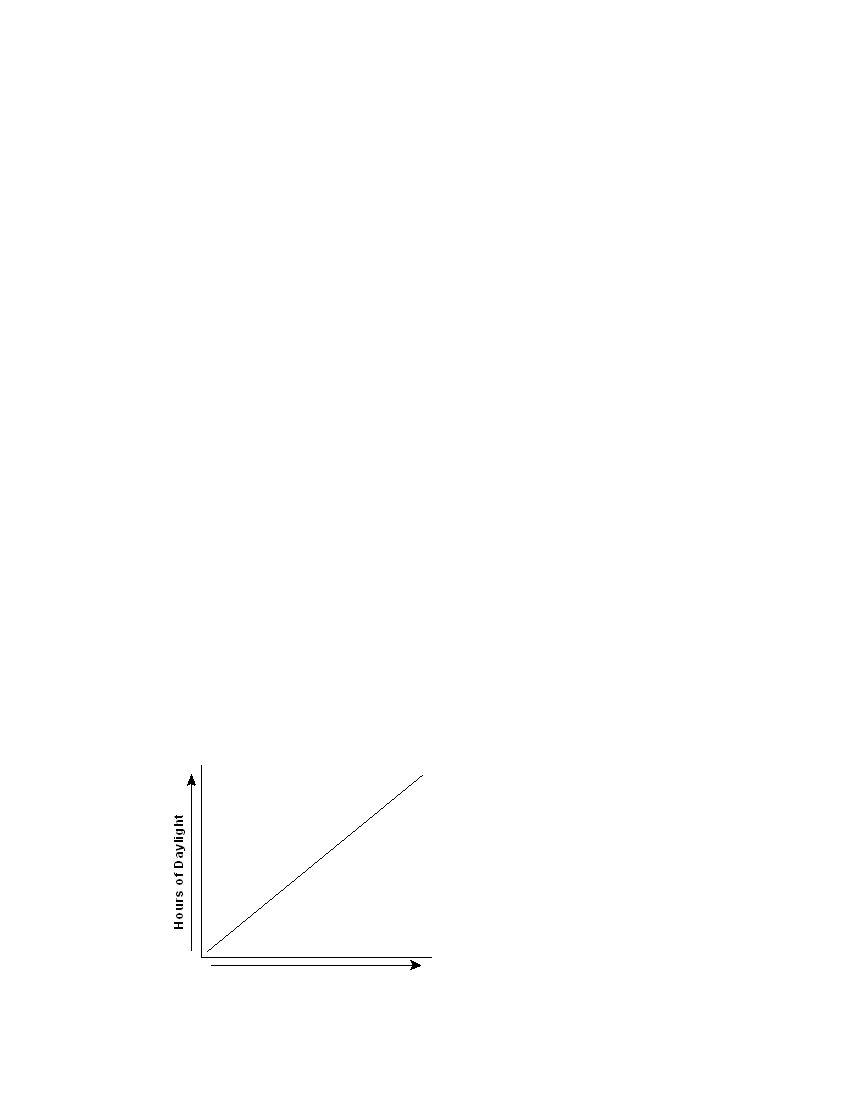
P HYSICAL S ETTING/ E ARTH S CIENCE – continued
69 [1] Allow 1 credit. Acceptable responses include, but are not limited to:
— passage of a low-pressure system
— passage of a cold front
— arrival of a warm air mass followed by the arrival of a cold air mass
70 [1] Allow 1 credit for any response from 490 to 443 million years.
71 [1] Allow 1 credit. Acceptable responses include, but are not limited to:
— The channel at A has a V-shape.
— Running water produces V-shaped channels.
72 [1] Allow 1 credit for the correct order below:
1. till
2. stratified drift
3. clay and silt
4. wind-blown sand
73 [1] Allow 1 credit. Acceptable responses include, but are not limited to:
— Glacial deposits are unsorted.
— Till is a direct ice deposit.
74 [1] Allow 1 credit. Acceptable responses include, but are not limited to:
— The gentle slope of the dune is on the southwest side.
— The windward side has a less steep slope.
— The steeper side is leeward.
75 [1] Allow 1 credit for a line on the graph showing that, as the altitude of the noontime Sun increases,
the hours of daylight increase.
Example of a 1-credit response:
Altitude of the Noontime Sun
[7]
[OVER]
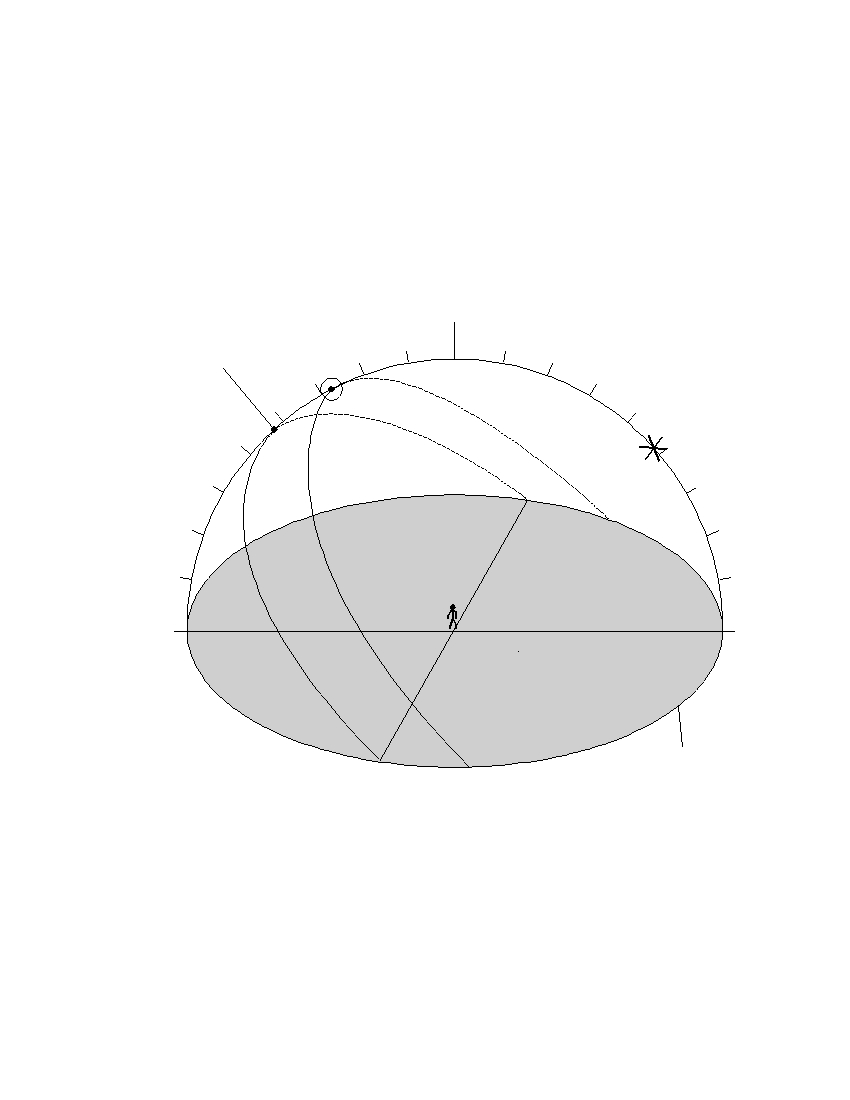
P HYSICAL S ETTING/ E ARTH S CIENCE – continued
76 [2] Allow a maximum of 2 credits, allocated as follows:
circle shown below.
horizon.
77 [1] Allow 1 credit if the center of the asterisk is between 40° and 45°.
Example of a 3-credit response for questions 76 and 77:
Zenith
8 0 °
8 0 °
Sun at
noon
6 0 °
6 0 °
4
0 °
4
0 °
W
2
0 °
2
0 °
Observer
S
in Buffalo
N
M
a
r
c
h
2
1
Horizon
E
[8]
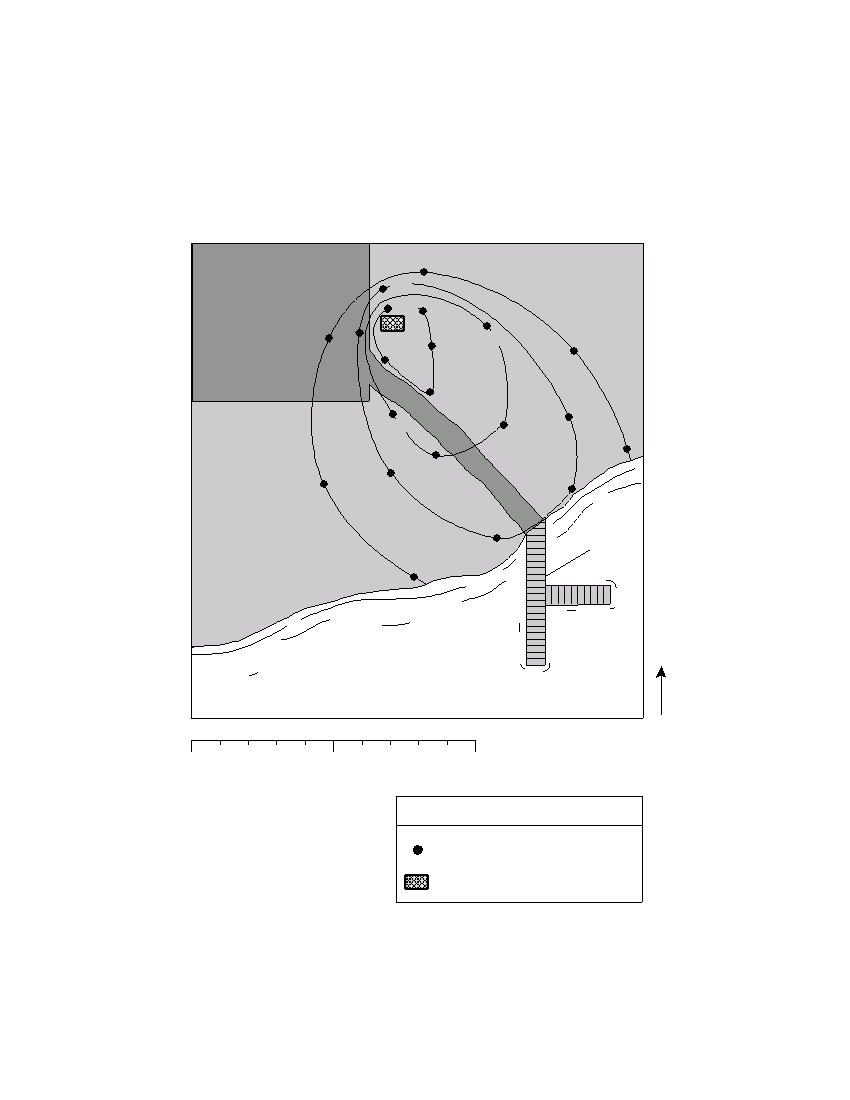
P HYSICAL S ETTING/ E ARTH S CIENCE – continued
78 [1] Allow 1 credit for three correctly drawn isolines.
Note: If the student draws additional isolines, all must be correct to receive credit. Allow credit even
if the isolines extend into Lake Martin.
Example of a 1-credit response:
Area of State Park
0
50
i n
g
r k
150
150
P
a
L o t
0
50
150
100
0
150
150
100
100
50
0
50 100
0
50
50
Dock
0
N
Lake Martin
0
50
100 meters
Key
Groundwater-monitoring well
Underground gasoline tank
[9]
[OVER]
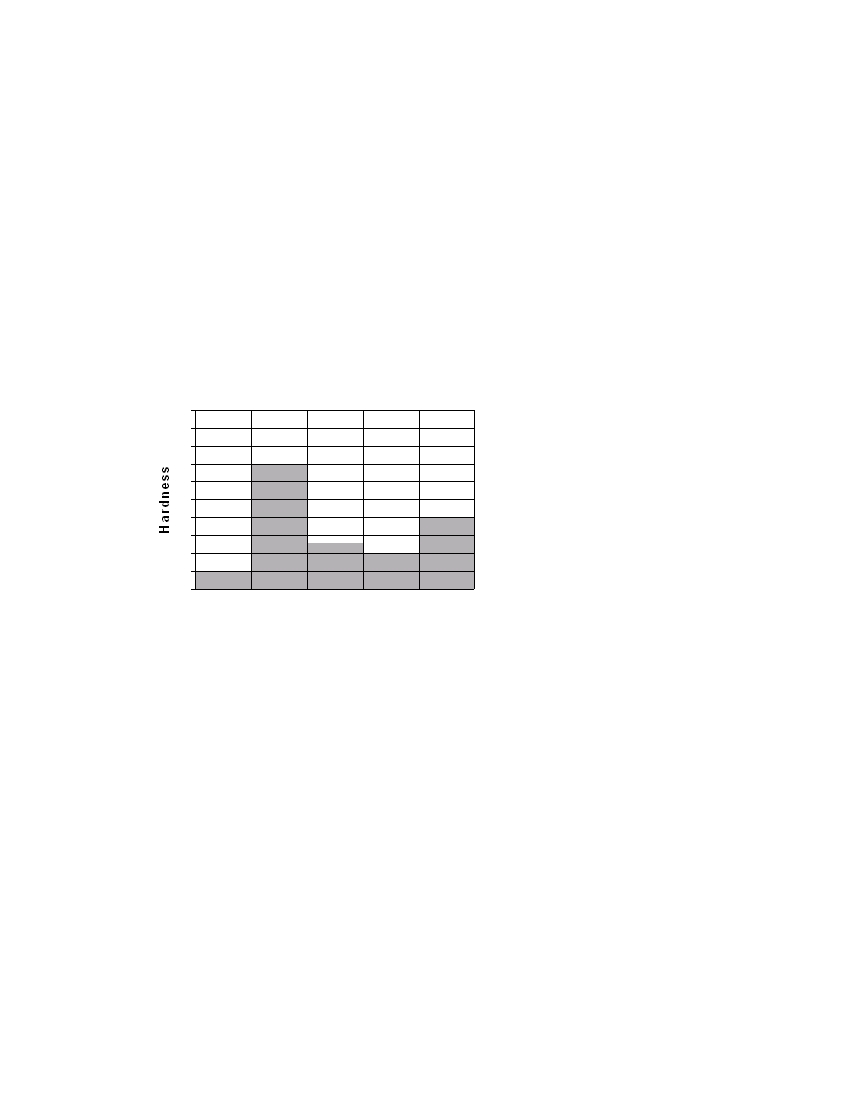
P HYSICAL S ETTING/ E ARTH S CIENCE – concluded
79 [1] Allow 1 credit. Acceptable responses include, but are not limited to:
— As distance from the tank increases, the concentration of contaminants in the groundwater
decreases.
— An inverse relationship exists between the distance from the tank and the concentration of
contaminants in the groundwater.
80 [1] Allow 1 credit. Acceptable responses include, but are not limited to:
— Place the tank above ground to observe leaks more easily.
— Build an extra liner around the tank.
— Replace tanks regularly.
81 [1] Allow 1 credit if all five bars are correctly drawn.
10
9
8
7
6
5
4
3
2
1
0
Talc
Quartz Halite Sulfur Fluorite
82 [1] Allow 1 credit for quartz and an acceptable reason. Acceptable reasons include, but are not
limited to:
— hardest mineral shown
— hardness of 7
— Quartz has the same hardness as garnet, which is used as an abrasive.
[10]
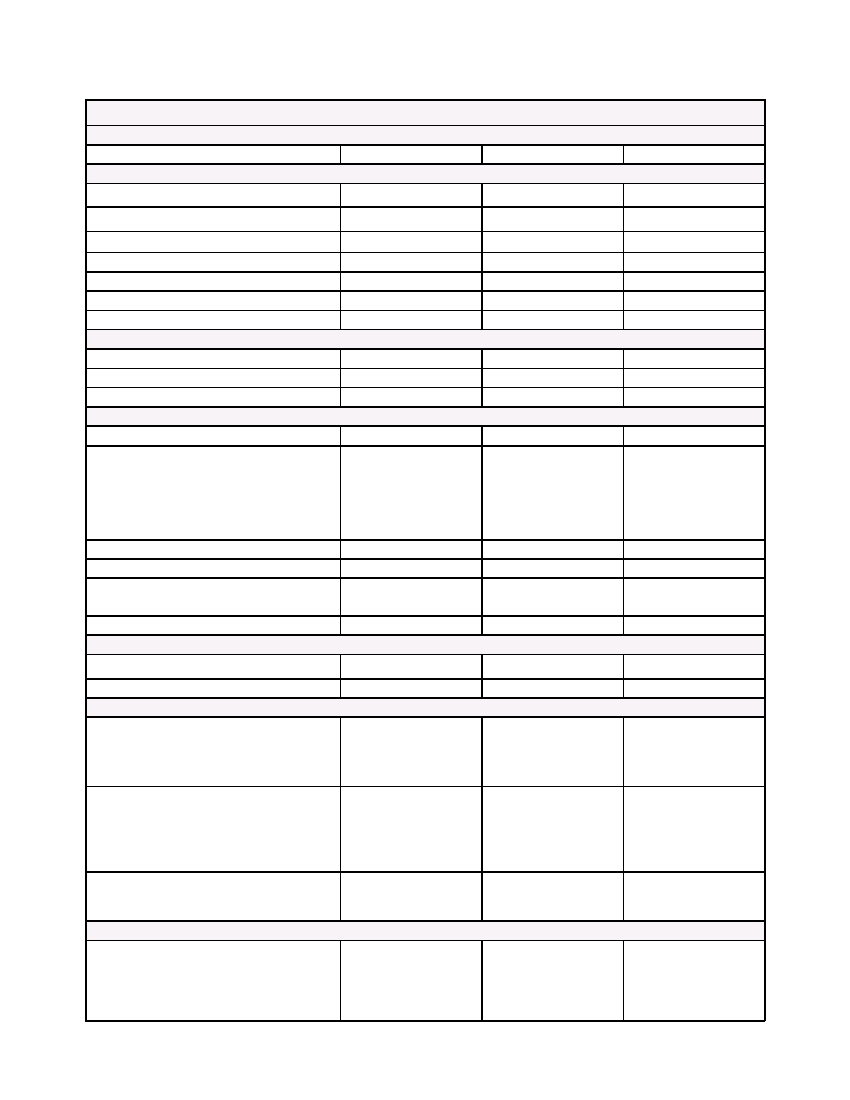
Map to Core Curriculum
August 2007 Physical Setting/Earth Science
Question Numbers
Key Ideas/Performance Indicators
Part A
Part B
Part C
Standard 1
Math Key Idea 1
65, 68
Math Key Idea 2
4, 26, 34
57
66, 75, 81
Math Key Idea 3
39
65, 79
Science Inquiry Key Idea 1
14, 23, 27, 29, 35 50, 53, 58
67, 69, 71
Science Inquiry Key Idea 2
16
Science Inquiry Key Idea 3
5
Engineering Design Key Idea 1
Standard 2
Key Idea 1
55
Key Idea 2
Key Idea 3
Standard 6
Key Idea 1
18, 20, 26, 30, 35 47, 55
73, 70
Key Idea 2
4, 8, 9, 17, 19,
36, 37, 38, 39,
65, 66, 67, 68,
21, 22, 24, 25,
40, 41, 42, 43,
71, 72, 74, 76,
28, 32, 35
44, 45, 49, 51,
77, 78, 81
52, 54, 56, 60,
61, 62, 63, 64
Key Idea 3
32
65, 66
Key Idea 4
Key Idea 5
1, 3, 15, 23, 24,
36, 38, 39, 41,
69, 74, 76, 78,
25, 31, 33, 34
48, 49, 55, 58, 59 79, 82
Key Idea 6
Standard 7
Key Idea 1
Key Idea 2
80
Standard 4
Key Idea 1
1, 2, 3, 4, 5, 6, 9,
42, 43, 44, 47,
65, 66, 67, 70, 72
13, 16, 29, 32,
48, 49, 51, 53,
75, 76, 77, 78,
33, 34
57, 58
79, 80
Key Idea 2
7, 8, 10, 11, 12,
36, 37, 38, 39,
68, 69, 71,
14, 15, 17, 18,
40, 41, 44, 45,
73, 74, 78, 79
23, 24, 25, 26,
52, 54, 55, 56,
80
27, 28, 30, 31, 35 57, 58, 59, 63, 64
Key Idea 3
19, 20, 21, 22
50, 51, 60, 61, 62 81, 82
Reference Tables
ESRT 2001 Edition
5, 7, 12, 13, 17,
37, 38, 39, 54,
65, 68, 70, 77,
20, 21, 22, 23,
55, 56, 60, 61,
81, 82
26, 27, 28, 29,
62, 63
30, 31, 32, 33
[11]

Regents Examination in Physical Setting/Earth Science
August 2007
Chart for Converting Total Test Raw Scores to
Final Examination Scores (Scaled Scores)
The Chart for Determining the Final Examination Score for the August 2007
Regents Examination in Physical Setting/Earth Science will be posted
on the Department’s web site http://www.emsc.nysed.gov/osa/ on
Thursday, August 16, 2007. Conversion charts provided for previous
administrations of the Regents Examination in Physical Setting/Earth
Science must NOT be used to determine students’ final scores for this
administration.
Submitting On-line Teacher Evaluations of the Test to the Department
Suggestions and feedback from teachers provide an important contribution to the test
development process. The Department provides an on-line evaluation form for State
assessments. It contains spaces for teachers to respond to several specific questions and to
make suggestions. Instructions for completing the evaluation form are as follows:
1. Go to www.emsc.nysed.gov/osa/exameval.
2. Select the test title.
3. Complete the required demographic fields.
4. Complete each evaluation question and provide comments in the space provided.
5. Click the SUBMIT button at the bottom of the page to submit the completed form.
[12]